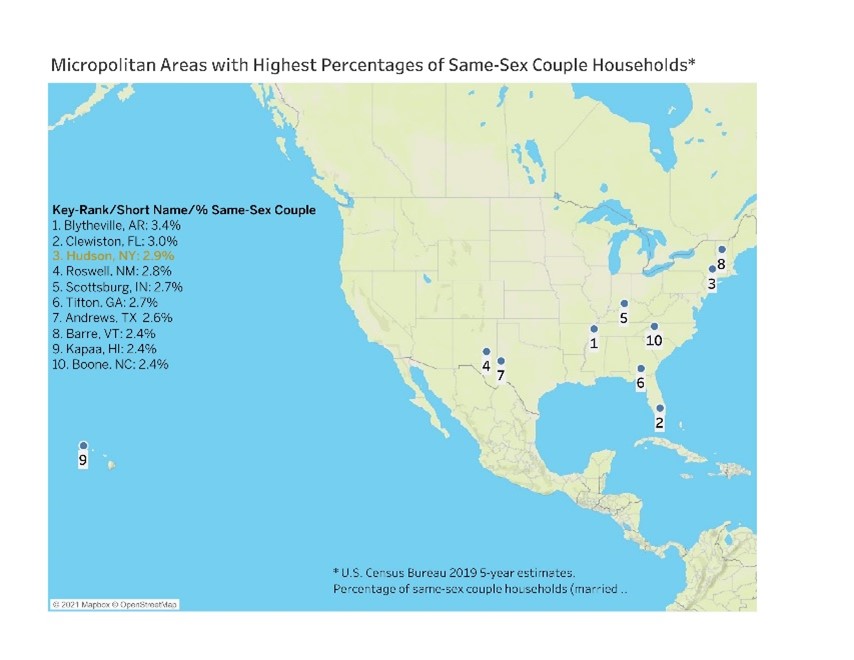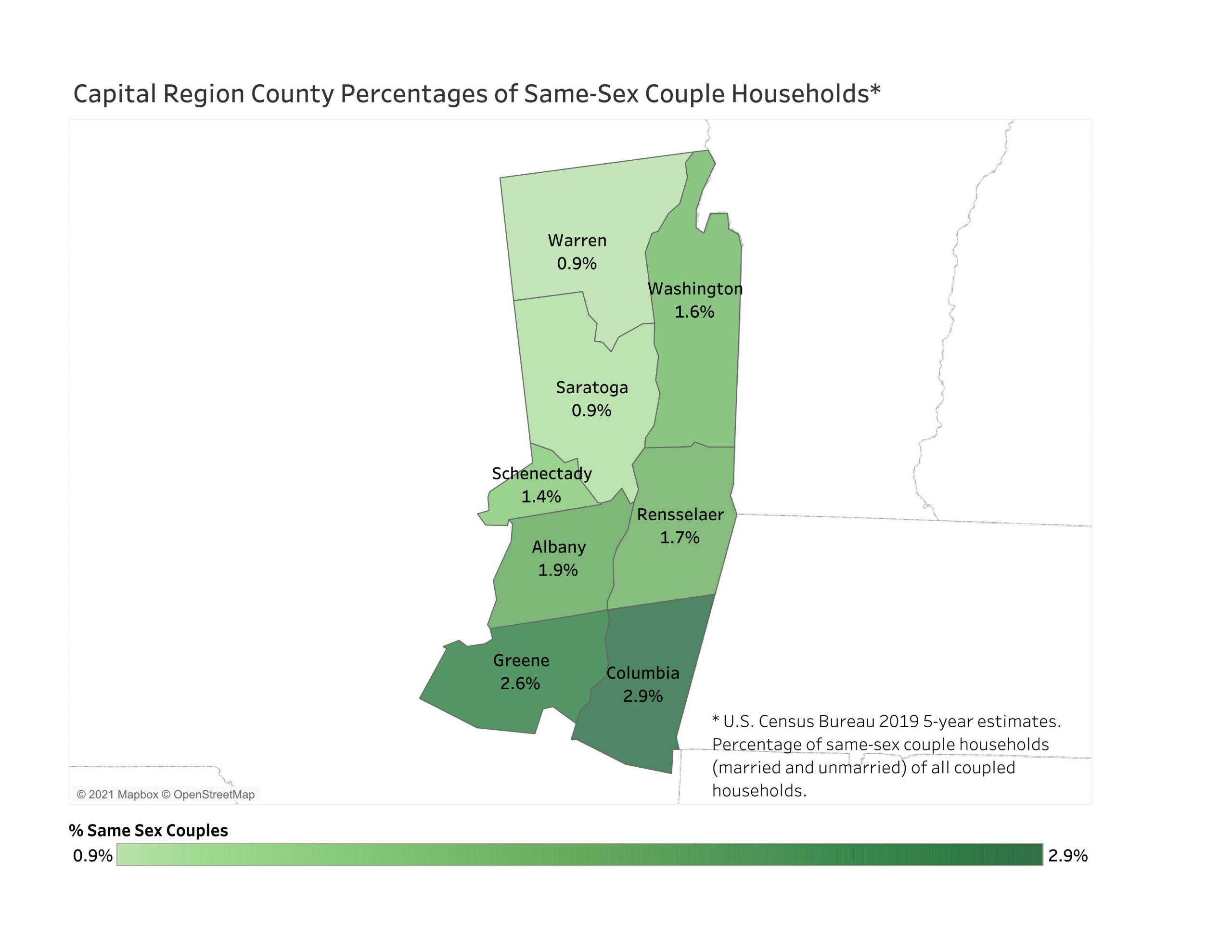Hudson Has 3rd Highest Percentage of Same-Sex Couple Households among Micropolitan Areas
New York’s Capital Region is a leading location for same-sex couples. Among micropolitan statistical areas (µSAs), the Hudson µSA has the third greatest percentage of same-sex couple households1 of all coupled households. Even more, among mid-sized metropolitan statistical areas (MSAs),2 the Albany-Schenectady-Troy MSA has the 37th highest percentage of same-sex couple households, according to a Center for Economic Growth (CEG) analysis of U.S. Census Bureau five-year estimates (2015-2019).
Hudson µSA
Hudson has emerged as a population destination for New York City tourists and relocating families. The New York Times recently reported Hudson ranked 1st as migration from NYC climbs. The National Association of Realtors also recently named Hudson the fifth top New Vacation Home Hot Spot. Heartland Forward ranked Hudson second for young firm knowledge intensity and SmartAsset ranked Columbia County as the second Best Places for Small Business Owners in New York.
Micropolitan Areas
In 2019, the Hudson µSA had 421 same-sex couple households, including 289 married and 132 unmarried same-sex couple households. Of all coupled households in the Hudson µSA, 2.9 percent had same-sex couples. Out of 542 µSAs, the only ones with higher percentages of same-sex couple households than the Hudson µSA were the Blytheville µSA in Arkansas and Clewiston µSA in Florida. At 2.0 percent, the Hudson µSA also ranked fourth for the highest percentage of married same-sex couple households.

Metropolitan Areas
The five-county Albany-Schenectady-Troy metro, home to the nation’s oldest continuously-operating LGBTQ community center and the first openly gay black person elected to public office, had 2,708 same-sex couple households. That included 1,357 married and 1,351 unmarried same-sex couple households. The Albany metro had the 37th highest percentage of same-sex couple households of all coupled households out of 139 mid-sized metros.
At 2.8 percent, the large metro with the highest percentage of same-sex couple households of all coupled households was the San Francisco-Oakland-Berkeley MSA. The leading mid-sized metro was the Santa Rosa-Petaluma at 2.8 percent and the top small metro was the Ithaca MSA at 3.7 percent.
Counties
In the eight-county Capital Region, there were 3,654 households with same-sex couples. At 1,127, Albany County had the most same-sex couple households, or 1.9 percent of all coupled households. At 5,807, Saratoga County had the second most same-sex couple households, but that was only 0.9 percent of all coupled households. Columbia and Greene counties had the highest percentages of same-sex couple households at 2.9 percent and 2.6 percent, respectively.

LBGT Population
New estimates from the Williams Institute at the University of California, Los Angeles indicate there are 28,000 LGBT adults in the Albany-Schenectady-Troy MSA, or about 4 percent of the total population. Only 4 percent of area LGBT workers were unemployed, compared to 6 percent of non-LGBT workers.
CEG Initiatives
To enhance Capital Region employers’ ability to draw from a diverse and inclusive labor pool, CEG and the Upstate Alliance for the Creative Economy launched a regional brand and talent attraction campaign. The CapNY brand, with the CAPable of aNYthing tagline, compliments a new talent attraction website (www.gocapny.com) and social media channels (@GoCapNY). The campaign focuses on mobile Millennial and Gen Z professionals and highlights for them the unique attributes of the eight-county, 1-million-strong Capital Region, including its vibrant urban centers, affordability, educated workforce, cultural assets, recreation, creative businesses, innovation, and proximity to major international cities.
Notes
1 Same-sex couple households are households that identified using the “same-sex spouse” or “same-sex unmarried partner” selections to the relationship to householder question in the Census Bureau’s American Community Survey.
2 Large metros > 1 million; Mid-sized metros = 250,000 and 999,999 people; small metros <250,000. µSAs contain a county with urban cluster with 10,000 to 49,999 people as well as any adjacent counties with which there are strong commuter ties.
Don’t miss these insights into the trends that are shaping the Capital Region’s economy. Sign up for CEG’s e-news and follow us on:













